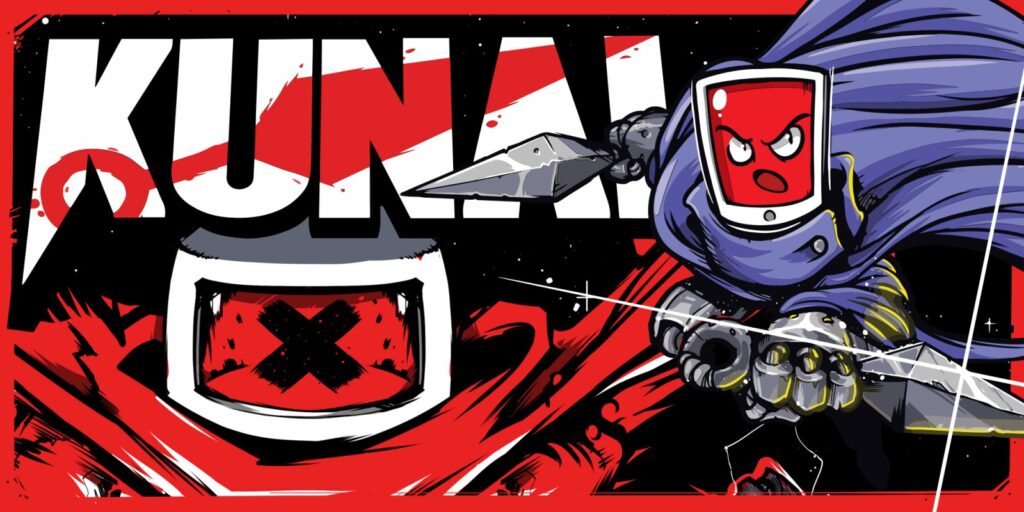
Fans of 2D metroidvania games have now more than ever been overwhelmed with options. With so many indie developers out there trying to leave their mark in this saturated genre, it could take ages to find one that can truly satisfy that itch. Could Kunai be such a title that stands out from the exhausting glut of metroidvania options?
Kunai
Developer: TurtleBlaze
Producer: The Arcade Crew
Platforms: Windows PC, Nintendo Switch (reviewed), Playstation 4, Xbox One, Linux, Mac OS
Release Date: February 6, 2020
Players: 1
Price: $19.99
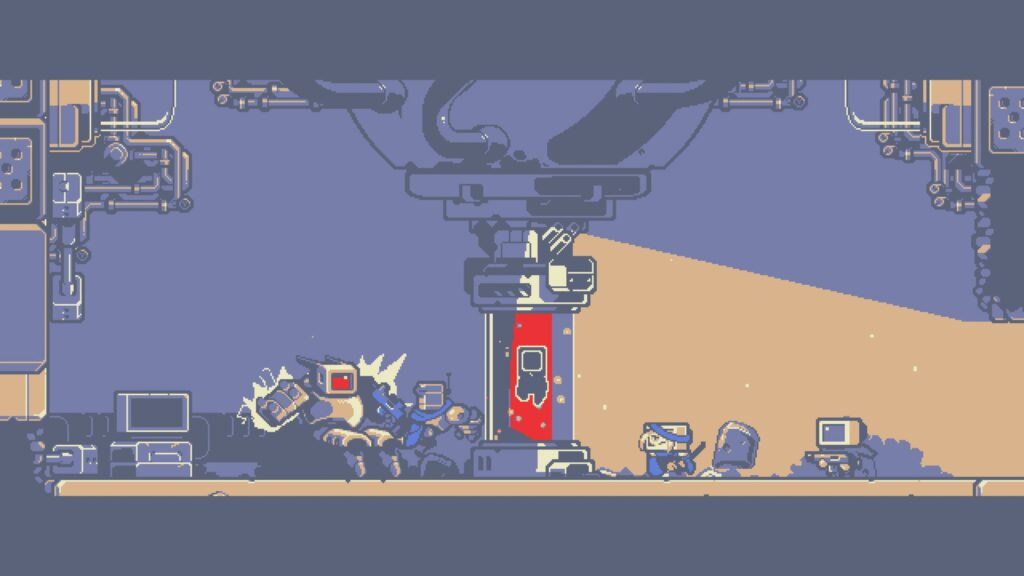
Like every super computer AI in fiction, one has gone rogue and begun an uprising of evil robots to exterminate human-kind. It’s a war of machine against machine, with some basic stakes involved to create the excuse of having fast paced metroidvania action in a post-apocolytic wasteland. Kind of like Nier Automata, but without the sexy skirts.
In Kunai you assume the role of a droid named Tabby, who happens to have a tablet for a head. Pretty much every character he will meet is some kind of robot or living computer abomination, with a display for a cranium. Tabby happens to be the latest and greatest model, decked out with ninja-like prowess.
Tabby moves with a gallant grace, and since Kunai has been designed with tight physics, he can also use his signature grappling kunais to swing with stylish momentum. Not counting the obviously metallic surfaces, pretty much everything can be used to swing using the twin kunai. Much like Bionic Commando, most of the traversal centers on mastering how to use these ninja tools.
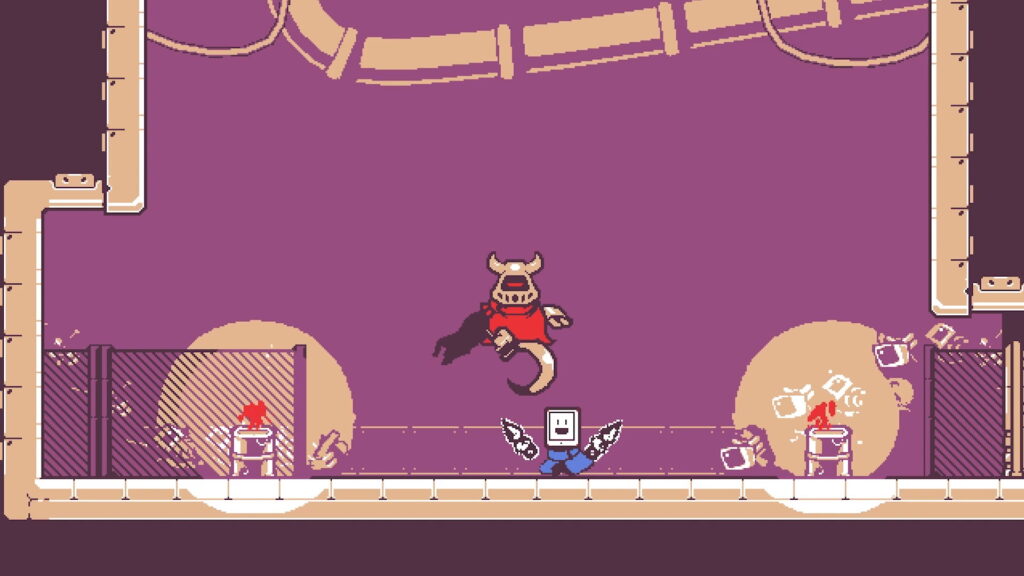
The real reason why anyone would pick this up is not for its story telling or plot. Kunai is all about the responsive 2D parkour and ninjutsu.
The twin-kunai are masterfully crafted game mechanics; very fluid and accurate, yet offering just enough wiggle room for some player mistakes. It can feel as if Tabby can go almost anywhere in this vast and mostly interconnected world, that is festooned with locked and secret passages.
Even the combat had some thought put into it, allowing for a nice and chunky hit box for Tabby’s katana that can attack in all four directions. He can even pogo-bounce with his blade on multiple enemies, gaining more momentum to jet his way across enormous gaps. Even against foes with ranged attacks, the blade proves mighty enough to strike back bullets back to where they came from.
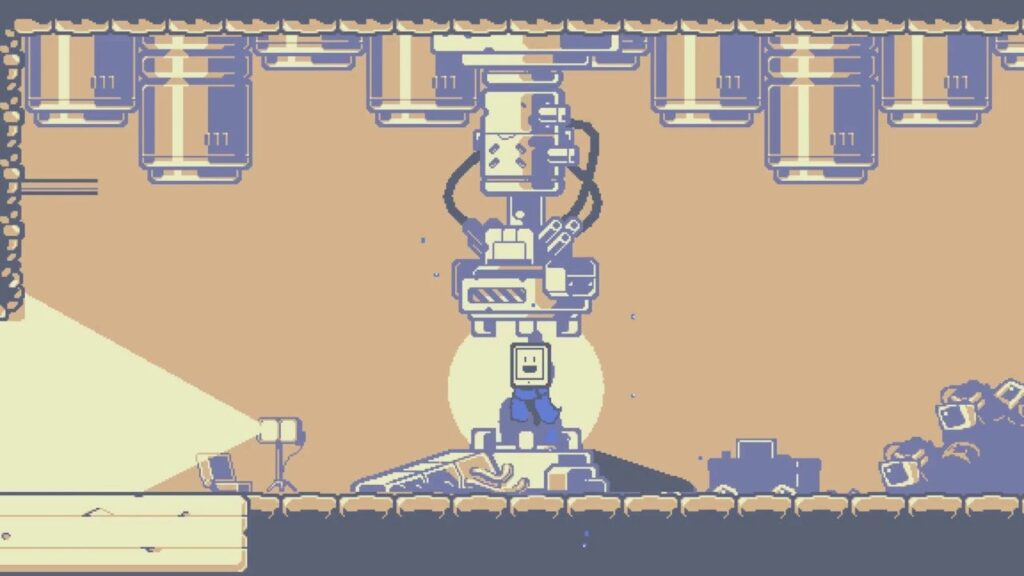
It can feel like maybe Tabby is over-powered with all the control at his disposal. Thankfully, Kunai is also deftly balanced and has a satisfying rise in challenge- even if it does not get high enough.
The most obnoxious enemies can be easily avoided entirely thanks to range of movement afforded to Tabby. Sometimes its just not worth the time or effort spent on killing enemies; especially after the auto health regeneration ability is purchased.
Kunai‘s core mechanics would be enough to satisfy most 2D action games, but TurtleBlaze ups the ante by constantly doubling down on giving the player more stylish combat options. Things take a turn for the absurd when Tabby gets two automatic guns that fire at such an intense rate that the gunfire doubles as a jetpack when aimed down.
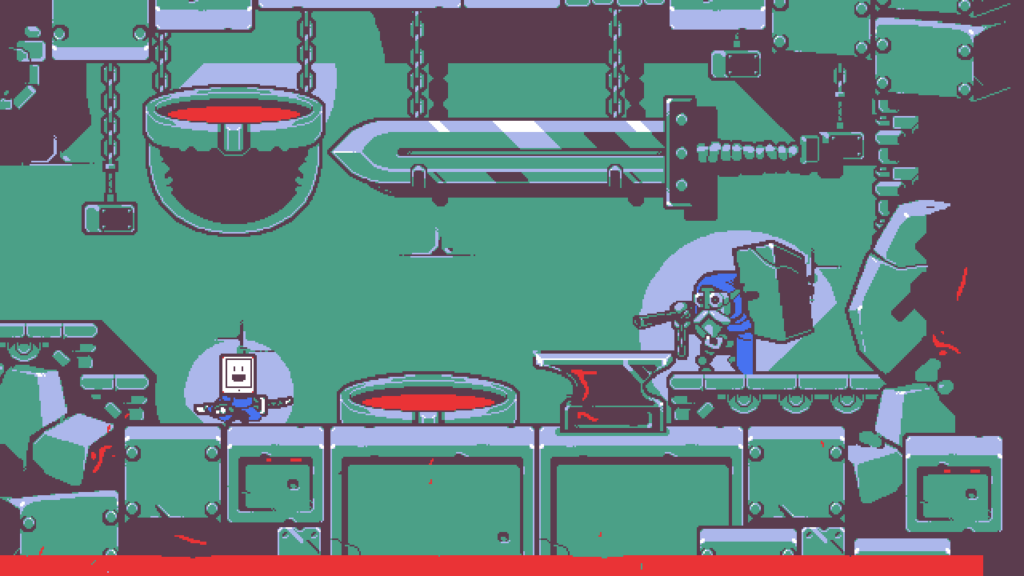
Level design in Kunai is about what is expected from most other metroidvanias, and is played very safe. What sets it apart is that once in a while the game throws a scripted linear sequence for variety, challenge, and story telling purposes.
The difficulty tends to be raised a bit during these moments and often have auto-scrolling, pushing the player to keep up and think fast. This is where things get most exciting and tense, since checkpoints are placed further apart when the game breaks away from its metroidvania trappings.
Mixing things up by shunting the player into these kinds of linear gameplay set-pieces is something that similar games should do more often, as it breaks up the tedium.
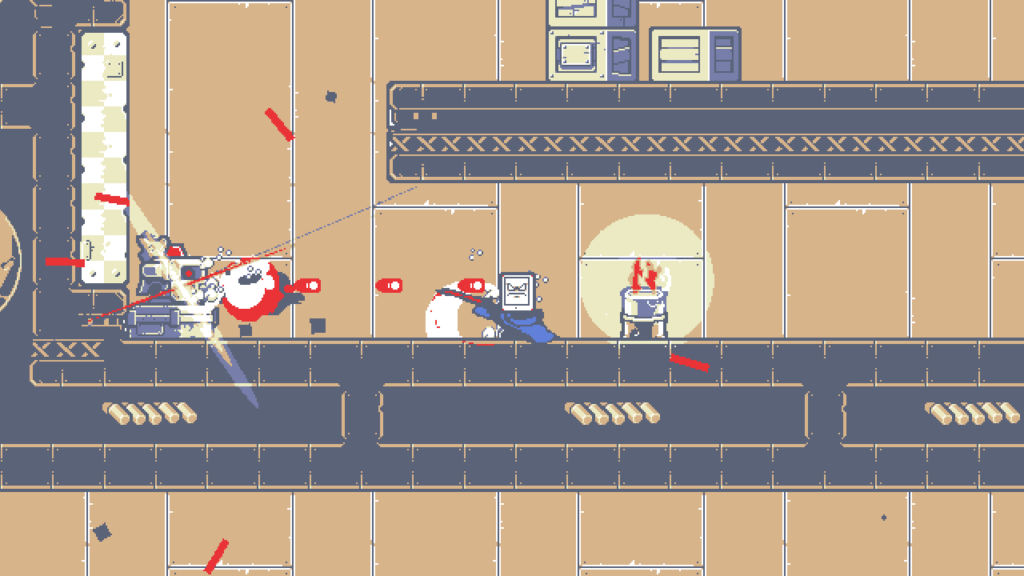
The ninja flavor is so strong that it out does Strider (2014), due to the TurtleBlaze’s action stamp and clever homages. Adorable homages to John Woo and Naruto’s ridiculous run illustrate the the developer’s attention to detail.
Before cutting down your first robot, the first thing that makes an impression is Kunai‘s distinct art style. The artists painstakingly crafted the world with a very limited pastel color palette, while only using a deep red to signify threats.
The harsh crimson that clashes against the soft and easy-on-the-eyes, vaguely preschool aesthetic, makes a memorable visual flourish. It is almost as if the overall silly premise of Kunai is only a facade to obfuscate its brutal and violent soul. If the enemies were not robots, all the red could be assumed to be blood.
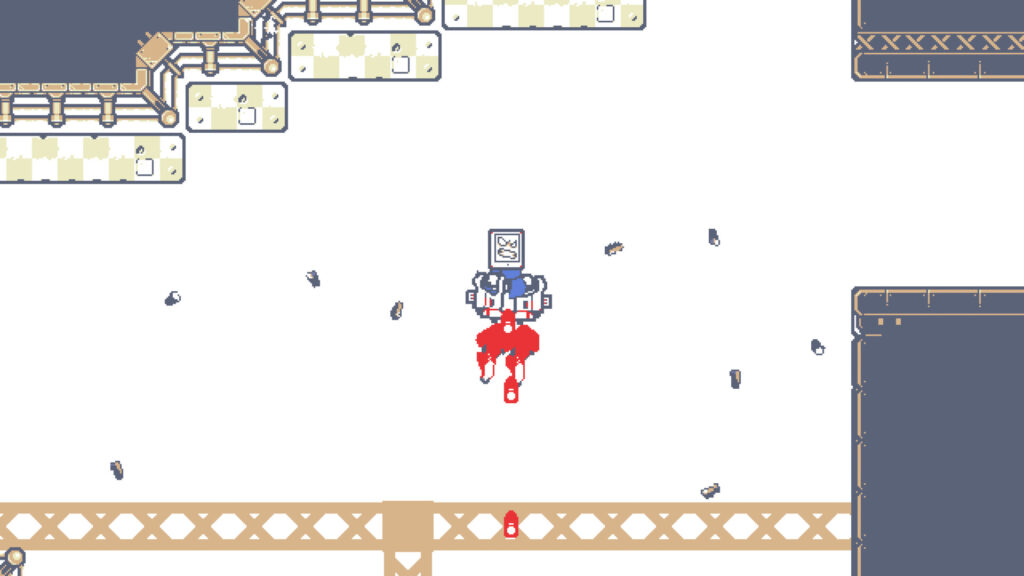
Simplistic pixel art is usually a tell-tale sign of amateur indie game dev, but TurtleBlaze are real masters of their crafts by designing some of the most appealing sprites for a metroidvania. Everything moves so fluidly, and combat comes with a gratifying crunch that is emphasized with an aggressive screen shake and sinewy sound design.
Artists took great care to liven up the background art by incorporating subtle animation effects. Whether it is the way lit torches react like melted light as Tabby passes by them or the extensive use of foreground layers, TurtleBlaze covered every imaginable aspect for a pixel-based game.
Tabby’s bizarre design has personality to him as he grins like a cat and stares in awe or even grimaces as he frantically swings his blade. His amount of expressions truly add to his appeal and makes him so much more likable than his initial impression would suggest.
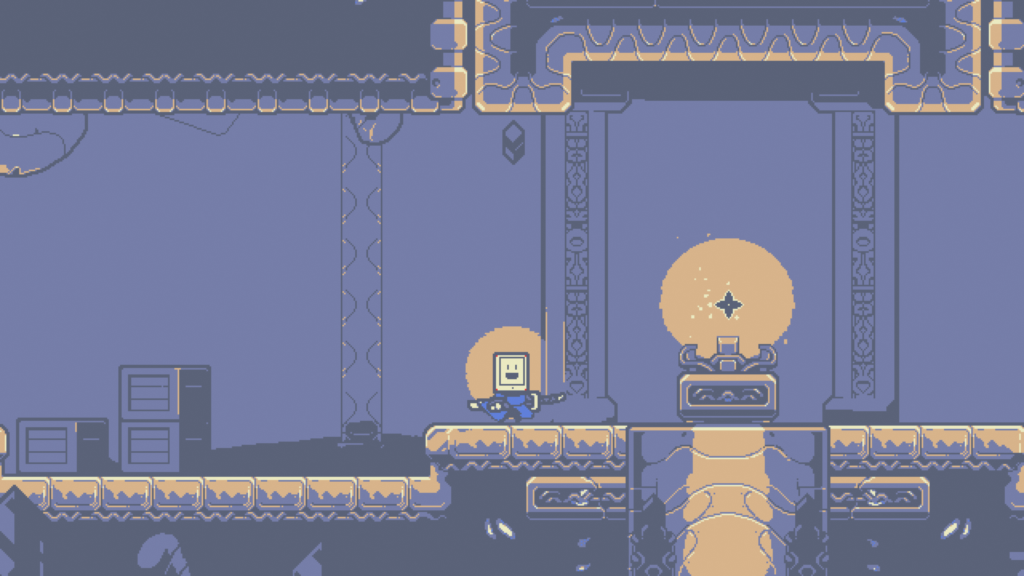
Thanks to trying to find all the heart-piece extensions or the tons of very well hidden cosmetic hats, Kunai ends up having a fair amount of replay value. If the collectibles don’t keep calling you back for a replay, then the pleasurable sensation of Tabby’s acrobatics and fierce combat is certain to bring the boys back for another go.
Compared to something like Hallow Knight‘s epic scale and length, Kunai may seem quaint and modest. It is because it does not overstay its welcome is why it’s action stays fresh and does not become exhausting.
While it does lean a bit on the easy side, kids will love this. Kunai could easily be a defacto entry level metroidvania to introduce to children.
Kunai was reviewed on Nintendo Switch using a review copy provided by The Arcade Crew. You can find additional information about Niche Gamer’s review/ethics policy here.